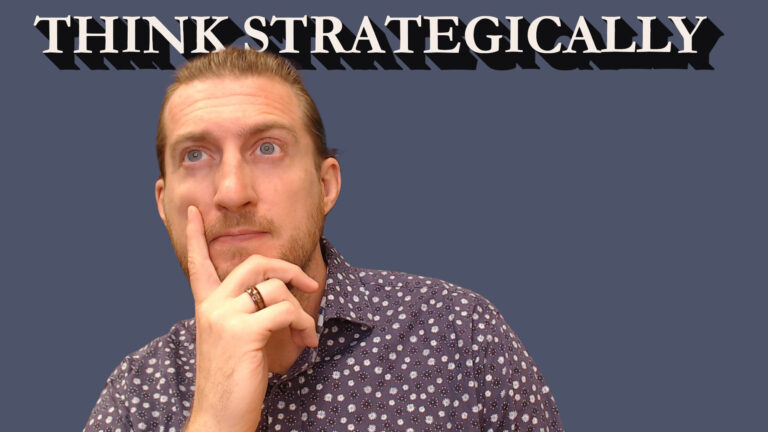In this series so far we’ve been focusing on the importance of working ON your business as opposed to IN your business and the role of thinking deep thoughts within that. We’ve talked about strategy. We’ve talked about tactics.
Now we’re into day-to-day operations, the most minuscule element and overall, the most intensive element to focus on.

If…
- Strategy is your art or your approach to things,
- Tactics is the science of trying to figure out what’s working and what’s not working to do more of it or less of it,
- Then the Day-to-Day Operations is the machine that keeps your business running on a daily basis.
The most important part of thinking about the day-to-day operations can be just making minor tweaks, adjusting systems, which is more of I would consider just a regular role of the Chief Operations Officer.
How To Be An Effective CEO Of Your Small Business Through Critical Thinking?
But from the CEO position high-level thinking about your business, the key thing to think about in day-to-day operations is how does the entire machine actually fit together?
- How do the different pieces come together?
- How does a customer progress through your machine, through your system?
- What’s the touchpoint here, then there, and then the next step?
- How about an order? If a customer does say yes, how does that actually go through the delivery of that order? How do your employees deliver on that?
- What is your follow-up like?
- How about your service itself?
- What does that look like?
Being able to track each of these pieces in the machine allows you to see the opportunities.
From that very high forest for the trees view, you can see “Well in this case, this information bounces around a lot and instead it could bypass and go right to here. We’re wasting a lot of energy.”
With looking at this deeper level, the day-to-day operations, there are a lot of opportunities that pop up.
But the biggest and most important one is understanding as an owner how each of the gears and mechanisms move together.

Document Instead Of Trying To Remember
To be honest, a business is way too complex to keep all of this just in your head.
What tends to work best is to capture information on paper for the variety of systems of
- how your employees do their work,
- the sales process,
- the customer journey,
- the employee roadmap for promotions,
- and more…
Getting that stuff out of your head onto paper is important.
From an operational standpoint it helps you with systemizing things to make the business run more smoothly.
These entire documents become an abbreviated version of your systems. Now it’s easier to see the big picture of how things flow and what happens.
From this big picture it becomes really helpful because now you can also understand more clearly, “if I make a change way over here, what are the interdependencies in other areas of the business that will be affected by that?”

When we look at the benefit of working ON your business versus IN your business and thinking at that higher level, we talked about strategy and tactics previously.
On the day-to-day operations side, the biggest thing is having a clear grasp of how the machine itself actually operates and also identifying smaller opportunities for, systems, processes, and clarity that can give you a clearer picture of how things should all work together.
If you have any questions, let me know in the comments.
Best of luck.
Keep on thinking. Bye.




You must be logged in to post a comment.